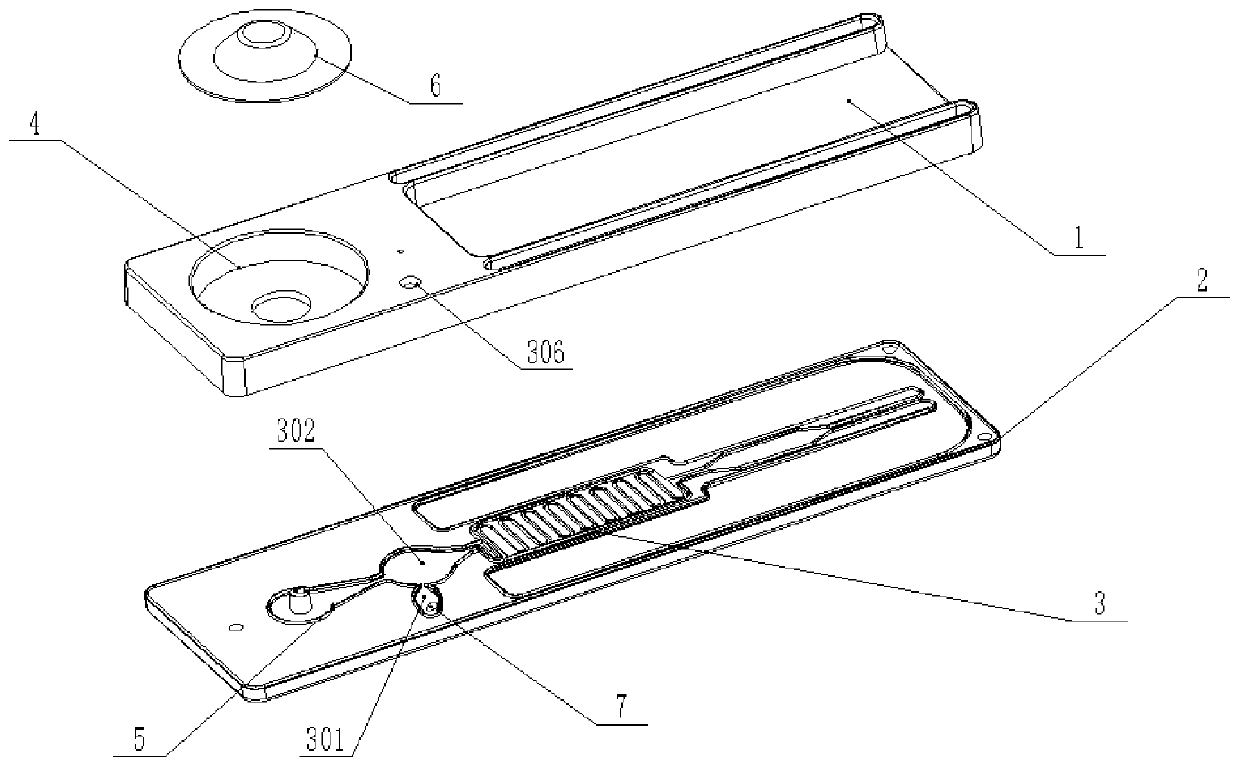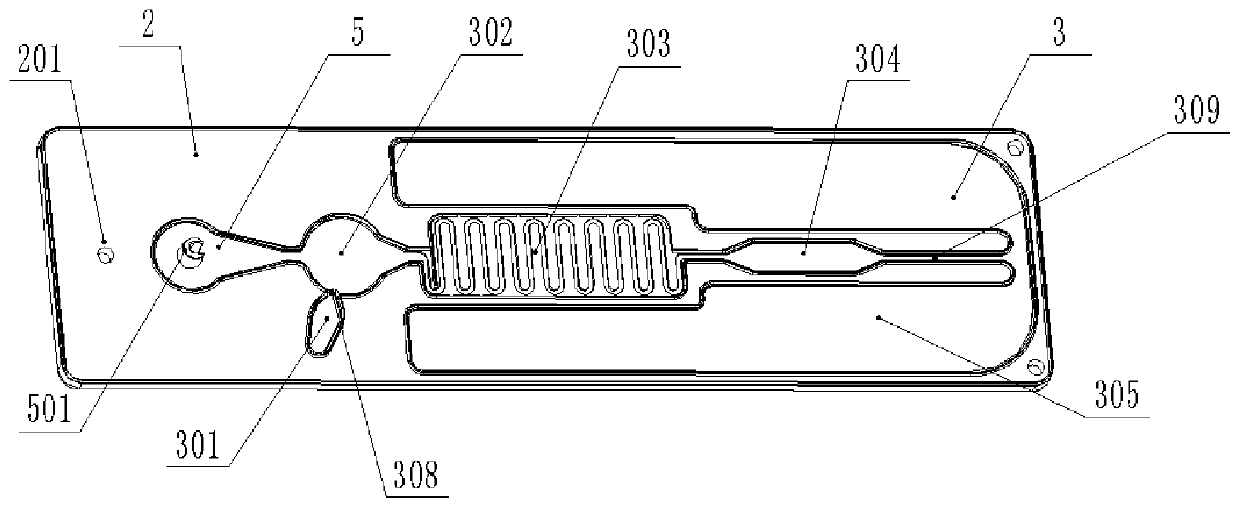Micro-fluidic chip detection method based on magnetic bead technology and reagent freeze-drying technology and micro-fluidic chip
A microfluidic chip and magnetic bead technology, which is applied in chemical instruments and methods, fluid controllers, biological testing, etc., can solve the problems of large coefficient of variation in repeatable testing, poor chip practicability, and complex chips, etc., to reduce transportation and Effects of storage cost, quick release and mixing
- Summary
- Abstract
- Description
- Claims
- Application Information
AI Technical Summary
Problems solved by technology
Method used
Image
Examples
Embodiment 1
[0094] Example 1: Determination of Procalcitonin (PCT) by Double Antibody Sandwich
[0095] 1. Antibody labeling
[0096] 1. Magnetic bead labeling
[0097] Take 1 mg of COOH-magnetic beads, the diameter of which is 1 μm, and add it into 1 ml of 2-(N-morpholino)ethanesulfonic acid (MES) buffer solution with a pH of 6.0, and mix well. Then add 10 mg of 1-(3-dimethylaminopropyl)-3-ethylcarbodiimide hydrochloride (EDC) and 10 mg of N-hydroxysuccinimide (NHS) and 0.1 mg of PCT capture antibody , vortexed and mixed at room temperature for 4 h. After the reaction was completed, the supernatant was removed by magnetic separation, and 1 ml of 50 mM glycine blocking solution with a pH of 8.5 was added, and after blocking for 1 hour, a magnetic bead-labeled PCT capture antibody was obtained.
[0098] 2. Fluorescent microsphere labeling
[0099] Take 1 mg of COOH-Eu-polystyrene fluorescent microspheres with a diameter of 300 nm, add them into 1 ml of MES buffer solution with a pH of ...
Embodiment 2
[0107] Embodiment 2: The concentration of T3 in the serum sample is determined by competitive method
[0108] 1. Antibody labeling
[0109] 1. Magnetic bead labeling
[0110] Take 1 mg of COOH-magnetic beads, the diameter of which is 3 μm, and add it into 1 ml of MES buffer solution with a pH of 6.0, and mix well. Add 10 mg of EDC, 10 mg of NHS and 0.1 mg of T3 capture antibody, and mix and react at room temperature for 4 h after vortexing. After the reaction was completed, the supernatant was removed by magnetic separation, and 1 ml of 50 mM glycine blocking solution with a pH of 8.5 was added. After blocking for 1 hour, the magnetic bead-labeled T3 capture antibody was obtained.
[0111] 2. Fluorescent microsphere labeling
[0112] Take 1 mg of COOH-Eu-polystyrene fluorescent microspheres with a diameter of 300 nm, add them into 1 ml of MES buffer solution with a pH of 6.0, and mix well. Then 10 mg of EDC, 10 mg of NHS and 0.1 mg of T3-BSA labeled antigen were added, vor...
PUM
| Property | Measurement | Unit |
|---|---|---|
| Particle size | aaaaa | aaaaa |
| Magnetic induction | aaaaa | aaaaa |
| Linear range | aaaaa | aaaaa |
Abstract
Description
Claims
Application Information
 Login to View More
Login to View More - R&D
- Intellectual Property
- Life Sciences
- Materials
- Tech Scout
- Unparalleled Data Quality
- Higher Quality Content
- 60% Fewer Hallucinations
Browse by: Latest US Patents, China's latest patents, Technical Efficacy Thesaurus, Application Domain, Technology Topic, Popular Technical Reports.
© 2025 PatSnap. All rights reserved.Legal|Privacy policy|Modern Slavery Act Transparency Statement|Sitemap|About US| Contact US: help@patsnap.com



